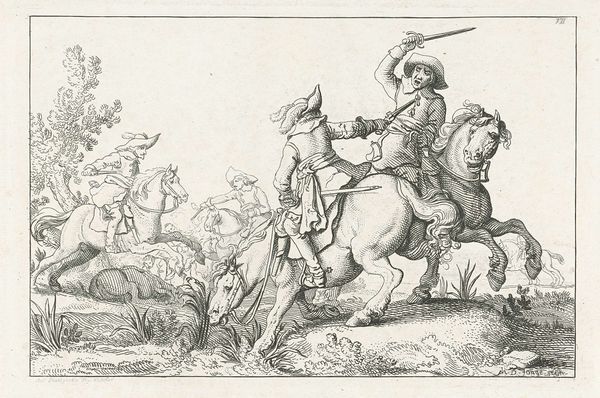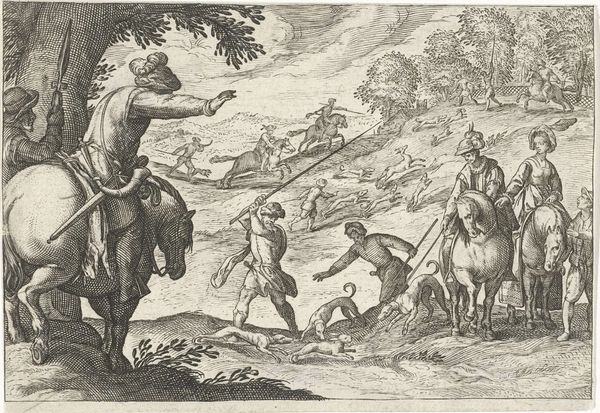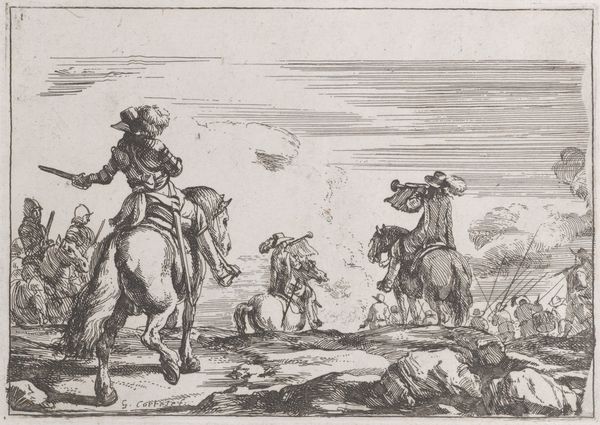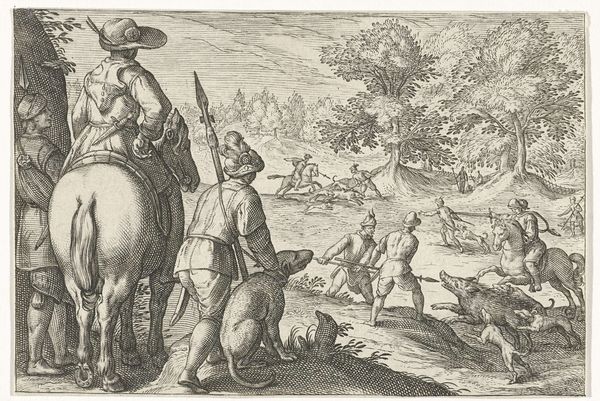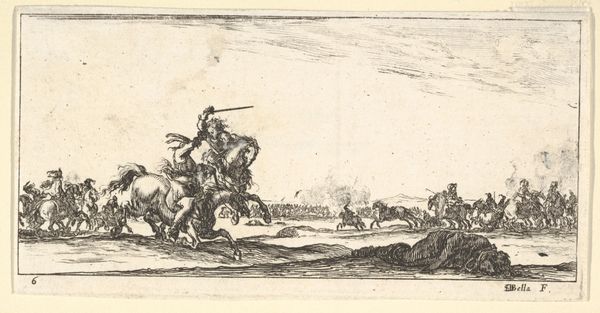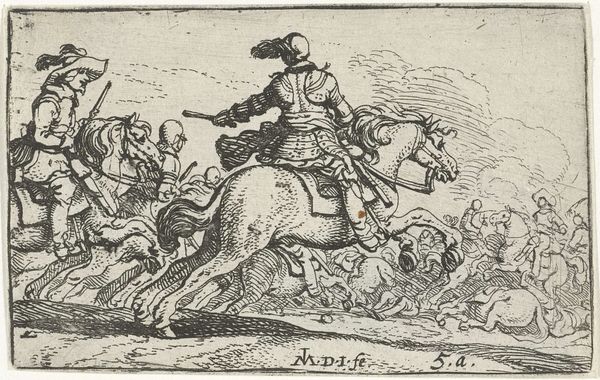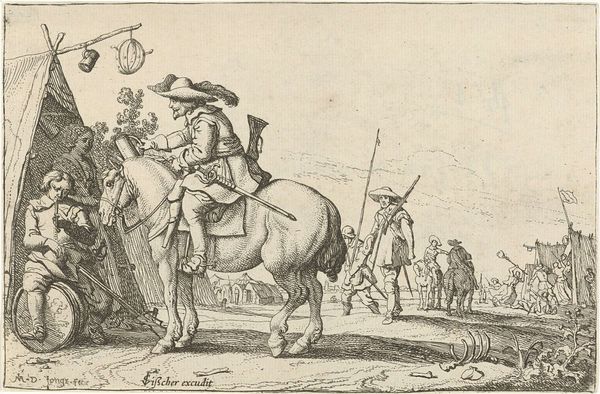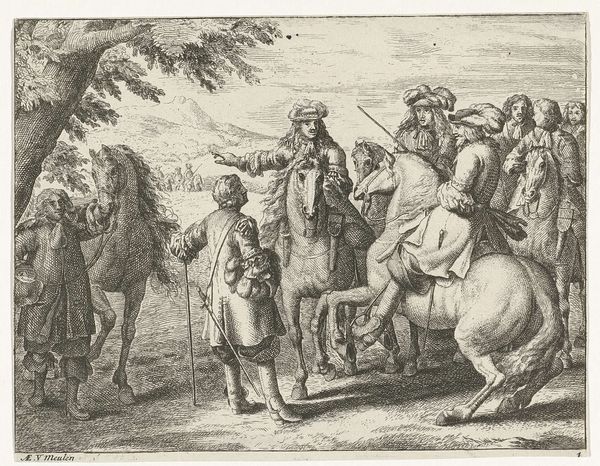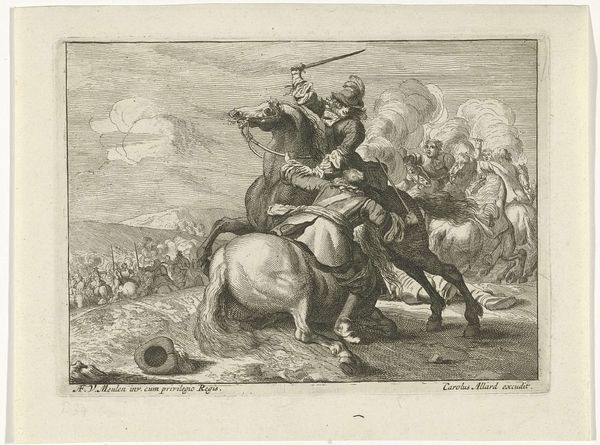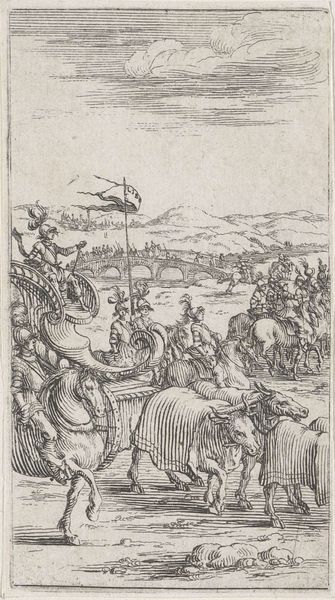
print, etching
#
baroque
#
dutch-golden-age
# print
#
pen sketch
#
etching
#
landscape
#
figuration
#
genre-painting
#
history-painting
#
realism
Dimensions: height 169 mm, width 248 mm
Copyright: Rijks Museum: Open Domain
Editor: This is *Veldslag met drie galoperende ruiters*, a print, an etching really, by Jan Martszen de Jonge, made sometime between 1619 and 1649. The detail is amazing! It almost looks like a pen sketch. All that cross-hatching. It feels so dynamic, but chaotic at the same time. What do you see in this piece, especially considering the time it was created? Curator: This print is a window into the Dutch Golden Age's fascination with military prowess and its public portrayal. Consider the context: The Eighty Years' War was ongoing, shaping Dutch identity. This wasn’t just about documenting a battle, but also about constructing a heroic narrative, wouldn't you agree? Who exactly are they fighting for, I wonder. Editor: Yes, definitely heroic, but also, well, kinda messy! It isn't particularly glorifying since, with that much going on, there’s barely room for heroism or clear victors. Or do you think I am wrong to interpret it as such? Curator: I understand your interpretation. While there’s chaos, look at the composition. The three riders in the foreground dominate, leading our eye. It’s a calculated arrangement. Etchings like these were distributed widely, shaping public perception of the war. Ask yourself, how did artists use such works to influence public opinion during times of conflict? And does it apply to today's perception of news? Editor: That's a fascinating way to look at it. So, it's less about an accurate record and more about shaping a story? A sort of "proto-propaganda?" Curator: Precisely! By controlling the narrative and focusing on select aspects of these conflicts and their actors, one can manufacture celebrity and stir emotions, something of an equivalent of our age. It puts a different spin on it, no? Editor: It really does! I had seen this just as a historical record, not a carefully constructed message. Curator: It's a valuable reminder that even seemingly objective depictions are laden with cultural and political intentions. Editor: Thanks! I'll definitely look at art from this period with a more critical eye. Curator: And I’m struck by the parallels with contemporary media. A fruitful exchange!
Comments
No comments
Be the first to comment and join the conversation on the ultimate creative platform.
